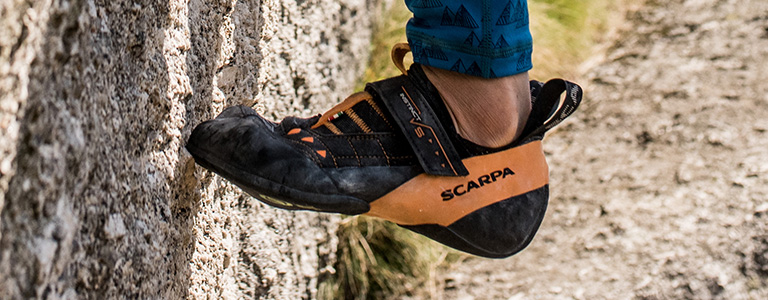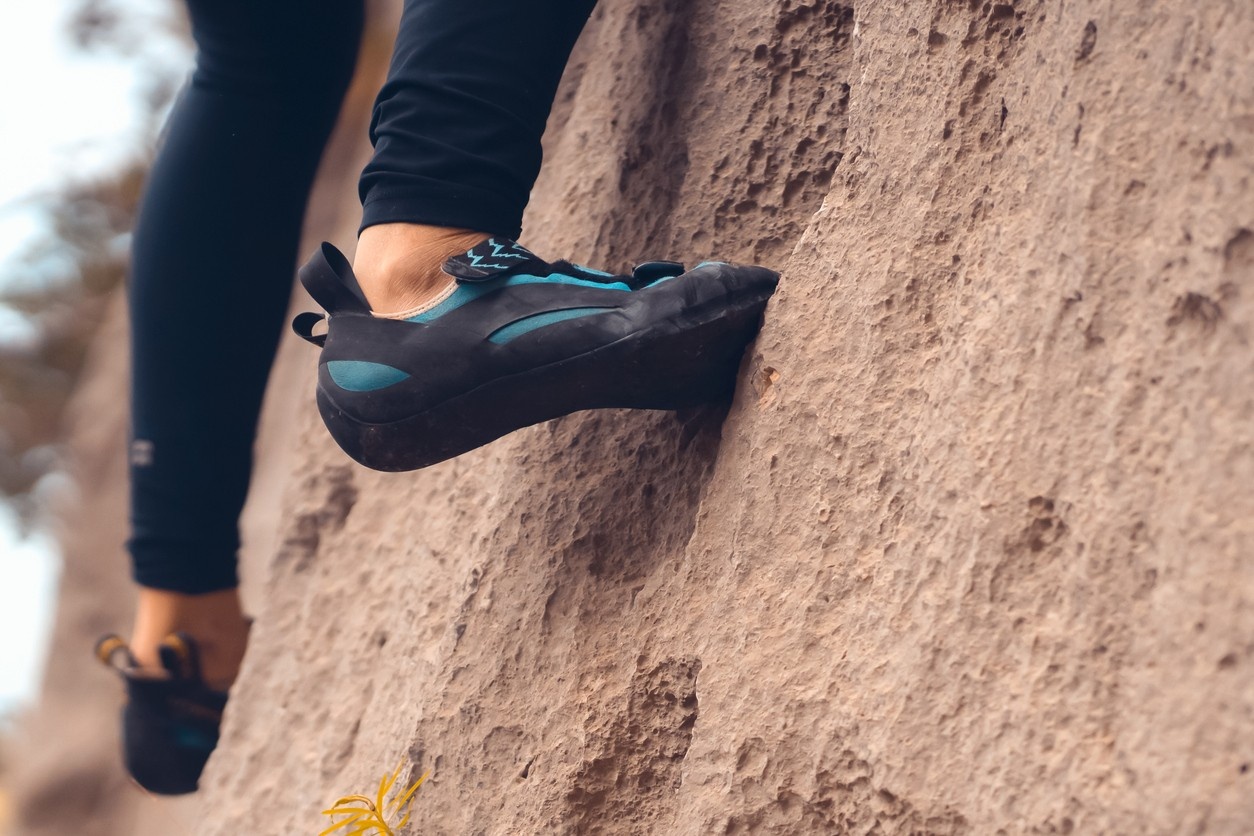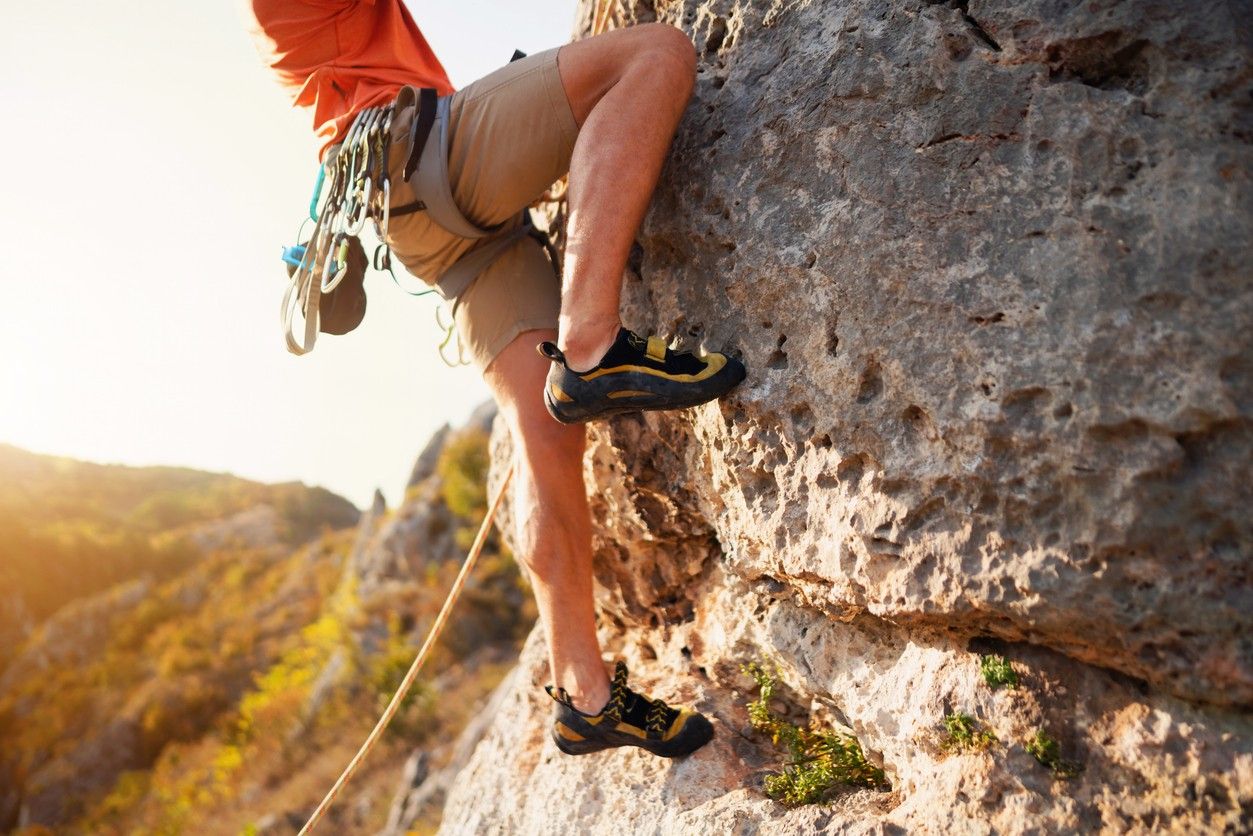Climbing Shoes — Balancing Comfort and Performance
climbing footwear has been a fascinating journey of innovation and performance. As climbers continue to push the boundaries of what's possible on rock, the shoes on their feet have become increasingly specialised tools, each designed to excel in specific disciplines and styles. From the comfort and versatility of neutral shoes to the precision and power of aggressive models, modern climbing shoes offer a wide range of options to suit every climber's needs. But with so many choices available, navigating the world of climbing footwear can be a daunting task for beginners and experienced climbers alike.
Understanding the anatomy of a climbing shoe is crucial for making an informed decision. The intricacies of closure systems materials, and design features all contribute to a shoe's overall fit and performance. Moreover, the various categories of climbing shoes, from neutral to moderate to aggressive, cater to different skill levels and climbing styles. Choosing the right pair of climbing shoes is a personal journey that requires careful consideration of individual needs and goals.
How Should Climbing Shoes Fit?
Achieving the perfect fit is crucial when it comes to climbing shoes, as it directly impacts your comfort and performance on the wall. Climbing shoes should have a snug, glove-like fit with no dead space around the toes or heel. Your toes should be slightly curled, but not painfully cramped, allowing you to transfer power and precision to the toe box when needed.
When trying on climbing shoes, it's essential to keep in mind that they will stretch and mould to your feet over time. Leather shoes tend to stretch more than synthetic ones, so it's common to choose a size that feels tight initially. The ideal fit should be snug enough to provide control and sensitivity, but not so tight that it causes extreme discomfort or pain.
It's also important to consider the shape of your foot when selecting climbing shoes. Some brands, like La Sportiva and Scarpa, tend to have a narrower, more asymmetric last that suits climbers with slender feet. Other brands, such as Evolv and Five Ten, offer models with a wider toe box and a more relaxed fit, catering to climbers with broader feet. The best way to determine the perfect fit is to try on multiple sizes and models from different brands. Don't hesitate to spend time in the shoe, testing its performance on a climbing wall or training board if possible. Remember, a well-fitting climbing shoe is an investment in your comfort and progress as a climber.
What Are the Different Types of Climbing Shoes?
Climbing shoes come in a variety of styles, each designed to cater to specific climbing disciplines and ability levels. The three main categories of climbing shoes are neutral, moderate, and aggressive.
Neutral climbing shoes have a flat profile and a relaxed fit, making them ideal for beginners and climbers who prioritise all-day comfort. These shoes allow the foot to maintain a natural position, providing support and friction without the precision and power of more aggressive models. Neutral shoes excel in crack climbing, slab climbing, and long multi-pitch routes where comfort is key.
Key features of neutral climbing shoes:
- Flat or slightly cambered last for a more natural foot position
- Relaxed fit with minimal downturn
- Thicker rubber soles for durability and support
- Ideal for long multi-pitch routes, crack climbing, and all-day comfort
Moderate climbing shoes strike a balance between comfort and performance, featuring a slightly downturned shape and a snugger fit. These shoes are versatile and suitable for a wide range of climbing styles, from indoor bouldering to outdoor sports routes. Moderate shoes offer more precision and power than neutral shoes, while still maintaining a reasonable level of comfort for longer climbing sessions.
Key features of moderate climbing shoes:
- Slightly asymmetric last for improved precision and power
- Mildly downturned shape for better performance on steeper routes
- Thinner, stickier rubber soles for enhanced sensitivity and grip
- Suitable for indoor climbing, sport climbing, and technical boulder problems
Aggressive climbing shoes are designed for advanced climbers tackling steep, overhanging routes and boulder problems. These shoes have a pronounced downturn and an asymmetric shape, focusing power on the toe box for precise footwork on small holds. Aggressive shoes provide unparalleled performance on demanding terrain but may sacrifice some comfort in exchange.
Key features of aggressive climbing shoes:
- Highly asymmetric last for maximum precision and power transfer
- Pronounced downturn for optimal performance on overhanging terrain
- Soft, sensitive rubber soles for enhanced smearing and toe-hooking
- Ideal for high-end sport climbing, bouldering, and competition climbing
In addition to the three main categories, there are also specialised climbing shoes designed for specific disciplines and techniques.
Specialised climbing shoes are crafted to excel in particular aspects of climbing, such as crack climbing, slab climbing, or competition climbing. These shoes often feature unique designs, materials, and technologies that cater to the specific demands of their intended use. For example, crack climbing shoes may have a flatter profile and a higher ankle cuff to protect the foot during jamming techniques. Slab climbing shoes often have a softer, more sensitive sole to maximise friction and smearing capabilities on low-angle terrain.
Bouldering Shoes vs. Sport Climbing Shoes
While there is some overlap between bouldering and sport climbing shoes, each discipline has specific requirements that influence shoe design. Bouldering shoes tend to be more aggressive and downturned, with a focus on precision and power for short, intense problems. They often have a softer, more sensitive sole to enhance grip and feedback on small, technical footholds. Sport climbing shoes, on the other hand, prioritise a balance of comfort and performance for longer routes. They may have a slightly less aggressive downturn and a stiffer sole to provide support and edging capabilities on longer climbs.
When choosing the right type of climbing shoe, consider your skill level, the style of climbing you enjoy, and your personal preferences for comfort and performance. As you progress in your climbing journey, you may find that having multiple pairs of shoes for different disciplines is beneficial.
Climbing Shoes Materials
From uppers to outsoles, we'll explore the science behind climbing shoe materials and help you make informed choices when selecting your ideal pair.
- Leather vs. Synthetic Uppers — Climbing shoe uppers are typically made of either leather or synthetic materials. Leather shoes tend to stretch and mould to your foot over time, providing a customised fit. Synthetic shoes, on the other hand, maintain their shape and are often more breathable.
- Rubber Outsoles — The rubber outsole is the part of the shoe that makes contact with the rock. High-quality rubber provides excellent grip and durability, helping you confidently tackle various climbing challenges.
- Midsoles and their Impact on Performance — Midsoles in climbing shoes can vary in stiffness. Softer midsoles allow for better sensitivity and are preferred for smearing on slabs. Stiffer midsoles provide support on small edges and pockets, making them ideal for edging.
Climbing Shoes Features
- Lacing Systems — Climbing shoes may feature different lacing systems, including Velcro straps, slip-on designs, and traditional laces. Each system offers its advantages, such as convenience, adjustability, or a secure fit.
- Closure Types — Closure types can affect the ease of putting on and taking off your climbing shoes. Some climbers prefer quick and simple closures like Velcro, while others opt for lace-up closures for a more customised fit.
- Rand and Toe Patch Materials — The rand is the rubber that wraps around the toe of the shoe. Different materials can provide varying levels of protection and precision. Some shoes also feature toe patches for added durability during toe-hooking moves.
What Is the Difference Between Men's and Women's Climbing Shoes?
While climbing shoes are often categorised as men's and women's models, the distinction is primarily based on the shape and volume of the shoe rather than gender. Women's climbing shoes, also known as low-volume shoes, are generally narrower and have a smaller heel cup compared to men's or unisex models. These shoes are designed to accommodate feet with a slimmer profile, higher arches, and narrower heels.
On the other hand, men's climbing shoes tend to have a wider toe box, a larger heel cup, and a higher volume overall. These shoes are suitable for climbers with broader, higher-volume feet, regardless of gender. It's important to note that the categorization of climbing shoes as men's or women's is not a strict rule. Many climbers, regardless of gender, find that shoes from the opposite category fit their feet better. The key is to focus on finding a shoe that provides the best fit and performance for your individual foot shape and climbing style.
When trying on climbing shoes, it's essential to disregard gender labels and instead focus on how the shoe feels on your foot. A well-fitting climbing shoe should provide a snug, comfortable fit with no dead space or pressure points, regardless of whether it's labelled as a men's or women's model. Some climbing shoe brands, such as Evolv and Five Ten, offer unisex models that cater to a wide range of foot shapes and sizes. These shoes provide a versatile option for climbers who don't fit neatly into the traditional men's or women's categories.
What Are the Best Climbing Shoes for Beginners?
For climbers just starting their vertical adventures, choosing the right pair of climbing shoes can make a significant difference in their comfort and progress. Beginners should prioritise comfort and look for neutral to moderate shoes with a flatter profile. These shoes provide adequate support and performance without being overly tight or uncomfortable.
Some popular beginner-friendly climbing shoe models include the La Sportiva Tarantulace, the Scarpa Origin, and the Five Ten Rogue. These shoes feature a relaxed fit, a medium-stiff midsole, and a durable rubber sole, providing the necessary comfort and support for new climbers. When selecting beginner climbing shoes, it's essential to find a model that fits well and allows for a natural foot position. Avoid the temptation to choose an overly aggressive or tight-fitting shoe, as this can lead to discomfort and discourage you from climbing regularly.
As you gain experience and develop your climbing skills, you may find that your footwear needs to change. Intermediate and advanced climbers often prefer more aggressive shoes with a tighter fit and a more precise toe box for tackling challenging routes and problems. Remember, the best climbing shoes for beginners are those that provide a comfortable, supportive fit and allow you to focus on developing proper technique and building confidence on the wall.
What Are the Top Climbing Shoe Brands?
The climbing shoe market is filled with numerous brands, each offering a range of models designed for various climbing styles and preferences. Some of the most popular and respected climbing shoe brands include:
1. Scarpa — Scarpa is a renowned Italian brand known for their high-quality climbing shoes. Founded in 1938, Scarpa has a long history of crafting innovative and performance-driven footwear for mountaineering and climbing. Their lineup includes popular models like the Instinct VS, Drago, and Vapor V, catering to climbers of all levels and styles.
Scarpa's climbing shoes are known for their precision craftsmanship, high-quality materials, and attention to detail. The brand uses advanced technologies, such as the Bi-Tension rand system and the PAF (Pressure Absorbing Fit) heel, to enhance the performance and comfort of their shoes.
2. La Sportiva — La Sportiva is another Italian brand that has been at the forefront of climbing shoe innovation for decades. Founded in 1928, La Sportiva has a rich heritage in mountaineering and climbing, with a reputation for producing some of the world's best climbing shoes. Their sport climbing shoes, such as the Solution and Miura VS, are favourites among elite climbers worldwide. La Sportiva's climbing shoes are renowned for their exceptional fit, precise edging capabilities, and sticky rubber soles. The brand uses proprietary technologies, such as the P3 (Permanent Power Platform) system and the XS Grip2 rubber compound, to optimise the performance of its shoes on a variety of rock types and angles.
3. Evolv — Evolv is an American climbing shoe brand that offers a wide range of models for both indoor and outdoor climbing. Founded in 2003, Evolv has quickly gained a reputation for producing innovative and high-performance climbing shoes that cater to the needs of modern climbers. Their shoes, like the Shaman and Defy, are known for their comfort and performance. Evolv's climbing shoes feature unique technologies, such as the Love Bump and the Knuckle Box, which provide a snug, comfortable fit and enhanced toe power for precise footwork. The brand also places a strong emphasis on sustainability, using eco-friendly materials and production processes whenever possible.
5. Black Diamond — Black Diamond is celebrated for its high-quality outdoor gear, and extends its expertise to the world of climbing shoes, earning recognition within the climbing community. Offering climbing shoes that blend performance with durability, Black Diamond has established a reputation for providing reliable options for climbers. Among their offerings are the Momentum Climbing Shoes, designed for both men and women. These shoes are well-suited for climbers seeking a versatile and comfortable choice that delivers a balance between performance and ease of use.
Should I Wear Socks with Climbing Shoes?
The question of whether to wear socks with climbing shoes is a common one among climbers, and the answer largely depends on personal preference and the specific situation. Most climbers prefer to wear climbing shoes without socks for several reasons. First, going sockless allows for a more precise and sensitive feel of the rock or wall, as there is no barrier between the foot and the shoe. This enhanced sensitivity can be particularly beneficial when climbing on small holds or delicate footholds.
Second, wearing climbing shoes without socks often results in a tighter, more secure fit. Socks can add bulk and create extra space within the shoe, potentially compromising the shoe's performance and precision. However, there are some situations where climbers may choose to wear socks with their climbing shoes. For example, when renting shoes at a gym or during a climbing course, wearing thin socks can provide a hygiene barrier and make the experience more comfortable.
Some climbers also prefer to wear socks to compensate for a stretch in their shoes. As climbing shoes break in and conform to the foot, they may become slightly looser. Wearing thin socks can help fill any extra space and maintain a snug fit. Ultimately, the decision to wear socks with climbing shoes comes down to personal comfort and the specific demands of your climbing session. Experiment with both options to determine what works best for you and your climbing style.
Related Articles

Let us know you agree to cookies
We use marketing, analytical and functional cookies as well as similar technologies to give you the best experience. Third parties, including social media platforms, often place tracking cookies on our site to show you personalised adverts outside of our website.
We store your cookie preferences for two years and you can edit your preferences via ‘manage cookies’ or through the cookie policy at the bottom of every page. For more information, please see our cookie policy.







